Oregon Logging in the 1900s
Page Content
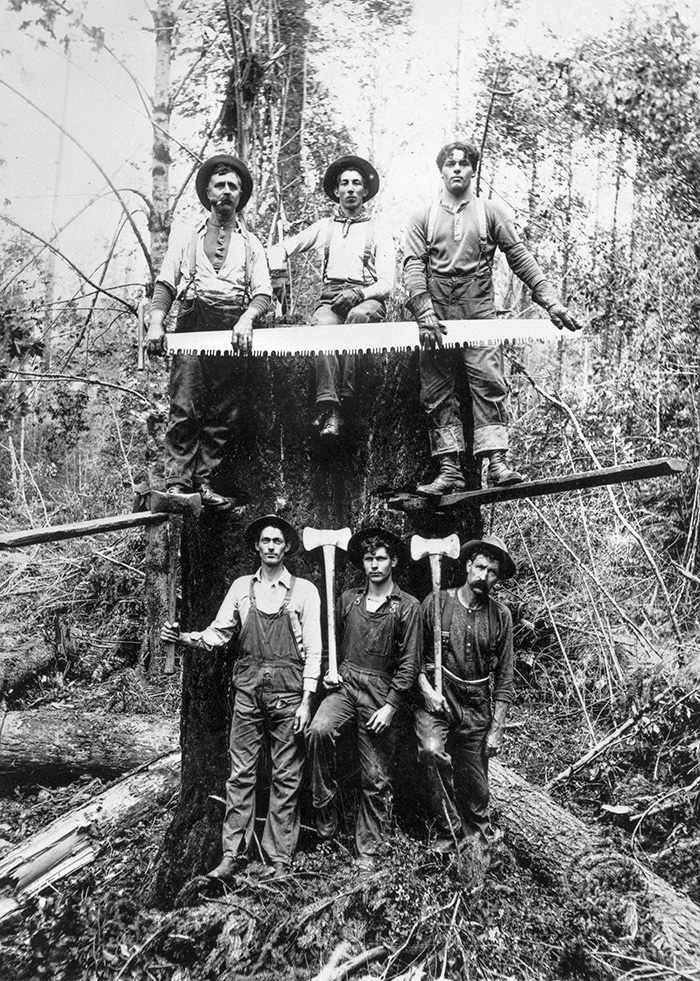 Oregon loggers pose on a massive tree stump in the early 1900s. (Courtesy Oregon Historical Society) Enlarge Image
Oregon loggers pose on a massive tree stump in the early 1900s. (Courtesy Oregon Historical Society) Enlarge Image
Timber had its ups and downs in Oregon history. Though a roaring industry through the 1920s, the Great Depression hit logging hard. By 1931, most mills operated at less than half capacity. The war economy of the 1940s increased both demand and production in the middle of a wartime labor shortage. Women worked sawmills in great numbers during World War II, and the postwar construction boom kept jobs plentiful.
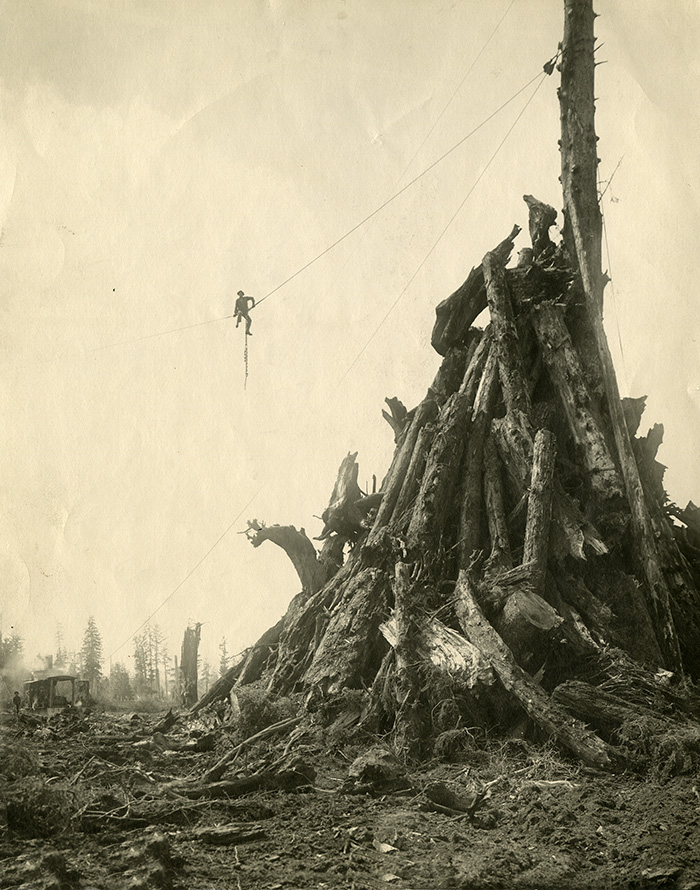 A man is suspended high in the air on a cable during early 1900s Oregon logging operations. (Oregon State Archives) Enlarge Image
A man is suspended high in the air on a cable during early 1900s Oregon logging operations. (Oregon State Archives) Enlarge Image
Environmental devastation followed logging operations. By the 1950s, timber companies promoted the “conversion” of old-growth forest into fast-growing stands. They sold the idea of clear-cutting whole regions as a “scientifically sound” practice. Companies at the time also dramatically increased the use of chemicals to control brush and undergrowth. Weak state and federal laws left forests open to exploitation. Strong laws protecting Oregon’s forests began in the 1970s with a ban on DDT and herbicides 2, 4, 5-T.
Major regulations did not come into effect until wildlife protections in 1991 slowed timber cutting on federal land. Today the industry is in decline, with private harvests down 20% from pre-1990s levels. On federal lands, Forest Service harvests fell over 90% from 2 billion board feet in 1990, to 245 million in 2000, and down to around 55 million in 2015.
Not only regulations but also the trend of replacing workers with machines have cut logging jobs since the 1980s. In the 1970s, timber employed over 80,000 Oregonians. This accounted for roughly 1 in 10 private sector jobs, 12% of Oregon’s Gross Domestic Product, and 13% of private sector wages. By 2019, Oregon’s logging industry amounted to only 30,000 employees, closer to 1 in 50 private sector jobs.
More 1900s Oregon Logging Photos
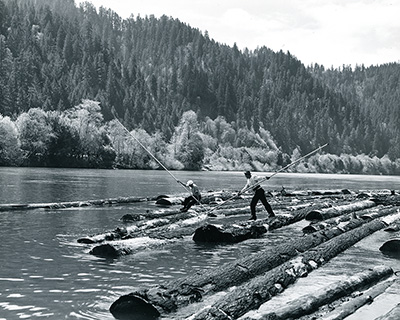
Men use long poles in 1951 to maneuver logs into rafts to float on the Umpqua River to a mill for processing.
(Oregon State Archives) Enlarge Image
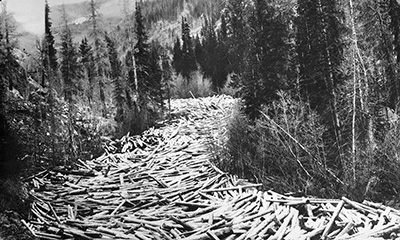
Logs clog a streambed awaiting a spring flood to carry them to the Columbia River in the early 1900s. (Courtesy of Oregon Historical Society) Enlarge Image
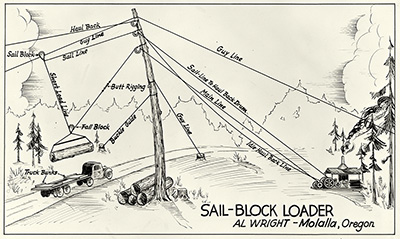
A 1950s graphic shows a complex system of cables used to load large logs onto log trucks for transport to wood products mills. (Courtesy of Oregon Historical Society) Enlarge Image